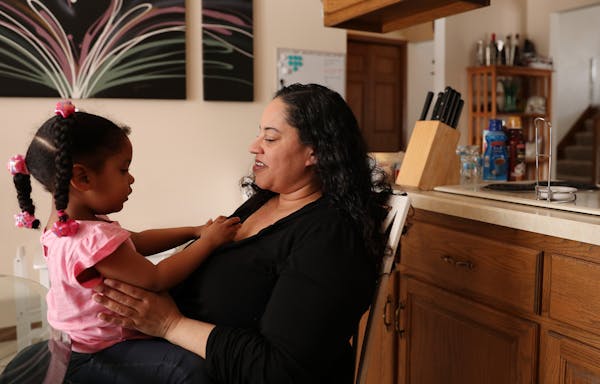Twin Cities Habitat for Humanity CEO Sue Haigh retires in June after 13 years on the job — a tenure that included helping 681 families buy homes, opening two Habitat Restores, and repairing and painting nearly 1,500 homes through its national trailblazing Brush With Kindness program. It's a job she said has helped her fulfill her mission to leave the world a little better than she found it.
Haigh, who has also worked as a prosecutor, been elected to the Ramsey County Board and served as chairwoman of the Metropolitan Council, reflected on her time with Habitat. The conversation has been edited for length and clarity.
Q: What drew you to Habitat for Humanity?
A: On the County Board, I either chaired the board or was the chair of the health and human services committee. During that time I really learned that if housing isn't working for families, nothing is working for families. When I was approached about the opportunity to come lead Habitat it was like, "That's so perfect!"
Q: You started as CEO in February 2005. What was the lay of the land of the organization at that time?
A: I came during the housing boom. Significant growth in land values made it very difficult to find land to build Habitat houses. We were always frantically trying to get a property acquired just in time for the build season.
Then, of course, we had the housing bust and the recession. That really changed everything for us. We really turned on a dime. We began to buy boarded and vacant homes and rehab them. We partnered with cities and the state and were able to get neighborhood stabilization grant dollars. That really allowed us to keep growing and serving families during the recession.
In addition to helping our families, we were part of a neighborhood revitalization strategy. There were whole blocks in core city neighborhoods that had boarded and vacant properties. We would identify a small area within a lower-income neighborhood and we would really attack it — really try to have impact.
Q: How did you attack that problem of neighborhood decline?
A: Our Brush With Kindness program targeted existing homeowners that were not able to keep their homes up, often on fixed incomes including Social Security or maybe there was a disabled family member. We painted and repaired homes at the same time we [were] building new homes or redoing boarded up and vacant homes. Brush with Kindness started right before I arrived. I am very proud of the fact that under my tenure we rolled it out to be a national Habitat program.
Q: What's been the biggest challenge you've faced?
A: We always have so many home buyer families, so many applicants who want to be Habitat homeowners.
Q: The Twin Cities has some of the worst inequities in homeownership rates between white families and families of color. How has Habitat responded to that?
A: Two and a half years ago, we adopted equity and inclusion as a core value in our organization. It's that important. We've have good success in building trust in communities of color — 90 percent of our home buyer applicants and our homeowners come from communities of color. We are really trying to embed equity in all aspects of our work.
Shannon Prather • 612-673-4804
